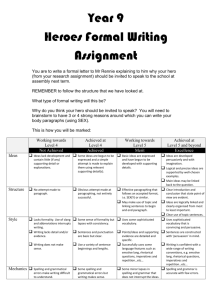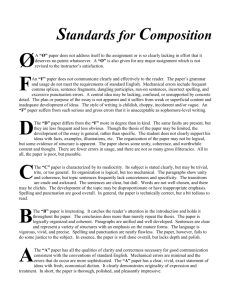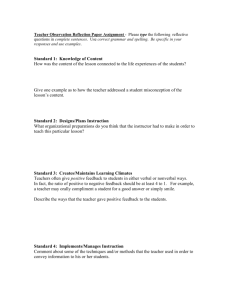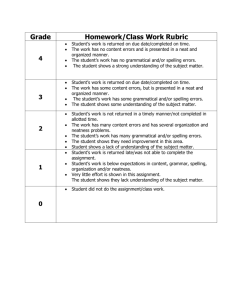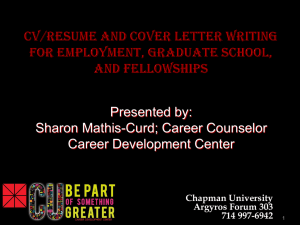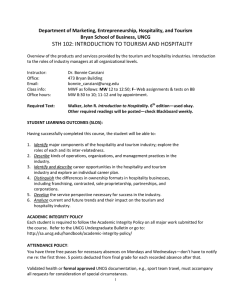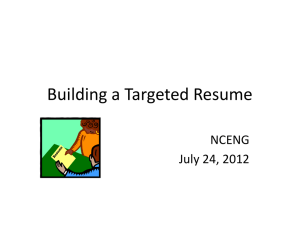Practical Writing (download powerpoint)
advertisement
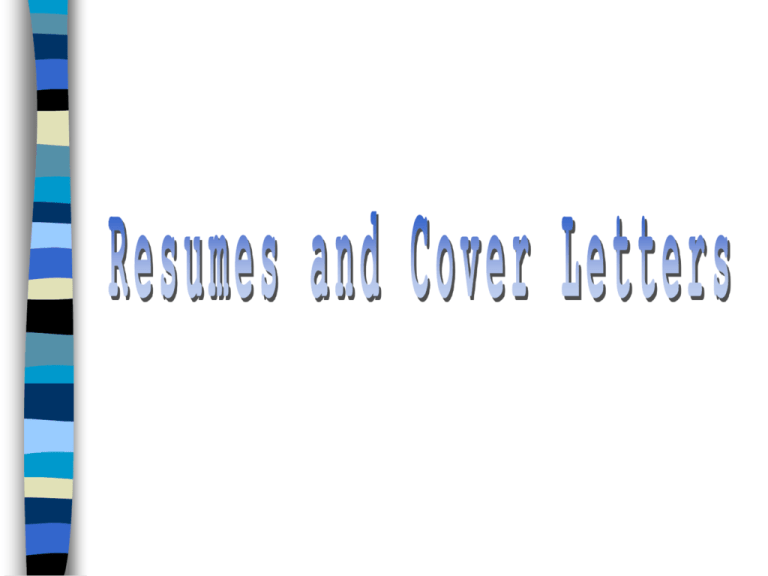
PREPARE AN EFFECTIVE RESUME 1. Summary of your qualifications and experiences 2. Include only the most important information: • Personal data • Career objective • Education • Work experience • Special/technical skills • Special qualifications (e.g., awards, exchange programmes) • Community/extracurricular activities • Personal interests • Statement about references 3. Not more than two pages 4. Use reverse chronological order for education and work experience. 5. Do not shrink the typeface to fit more words on the page. 6. Keep all four margins to no less than one inch. 7. Use bullets to attract attention to important points; but do not overuse. 8. Do not overuse boldface, underlining, and italics. 9. Leave plenty of white space. IMPORTANCE OF THE COVER LETTER 1. One of the most important letters you will write in your lifetime 2. Captivate the interest of your prospective employer. 3. Employers don’t have time for irrelevant details. 4. Move from “This is what I have done” to “Here is how I can help you.” 5. Give the cover letter (and the resume) your greatest attention. WHAT QUALITIES DO EMPLOYERS LOOK FOR? 1. Accomplishments • What you have learned and achieved that is relevant to the needs of the employer 2. Enthusiasm • Positive attitude • Work ethic 3. Organization of thought • Unified and coherent paragraphs 4. Grammatical and spelling correctness • Attention to details • Level of professionalism 5. People skills • Interacting with people in various roles • Oral presentations • Leading others or acting as coordinators MAIN POINTS IN A COVER LETTER 1. State how good you are for the position. 2. Support that statement. 3. Ask for action. ELEMENTS OF A GOOD COVER LETTER 1. Be brief: one page only. 2. Include adequate white space. 3. Do your research about the company. 4. Match your skills to their needs. 5. Address your letter to a person rather than “To Whom It May Concern” or “Dear Sir or Madam.” 6. Show your accomplishments (Do you have a third-party endorsement?) 7. Keep a positive, but not over-assertive, tone. 8. Do not do anything fancy or strange. 9. Make a neat and professional presentation. 10. Make sure there are no grammatical and spelling errors. 11. Be clear, concise, and focused. WRITING TECHNIQUES 1. Keep your sentences short. 2. Keep your paragraphs short. (Guideline: 5 lines per paragraph) 3. Use action words. Not: I was responsible for organizing group activities. But: I organized group activities. Not: I was responsible for many research projects. But: I supervised household interviews in five research projects in the summers of 2000 and 2001. Not: My duties included designing the learning materials. But: I designed the learning materials. 4. Vary your sentences. 5. Use plain, familiar words. Not: I am conversant with the use of computers. But: I am familiar with the use of computers. I am experienced in the use of computers. 6. Avoid using contractions, abbreviations. I’ve worked CUHK I have worked (spell out) UK the United Kingdom Admin Dept Administration Department 7. Be careful with the word “very.” Try to use a more specific word. Not: I am very interested in the position, and would very much appreciate your consideration. But: I am enthusiastic about the position, and would appreciate your consideration. 8. Watch the “I” word. • Do not start most sentences with the word “I.” e.g., I am responding to your advertisement in the South China Morning Post on (date). As you can see, the skills I have acquired in my undergraduate training directly relate to the position you have available. THE FINAL PRODUCT 1. Fonts • Choose business-like fonts (e.g., CG Times, Times New Roman). • Use the same font, as more than one font on a page can look confusing. 2. Proofreading • Leave your document at least overnight; come back to it later. • Check and double check: Spelling Grammar Sentence structure Punctuation 3. Paper • Use good quality paper: Better impression Sharper print resolution • White or cream: straightforward business-like • Letter stationery should always match the colour and weight of your envelope and resume. • Use only one side of the page.
